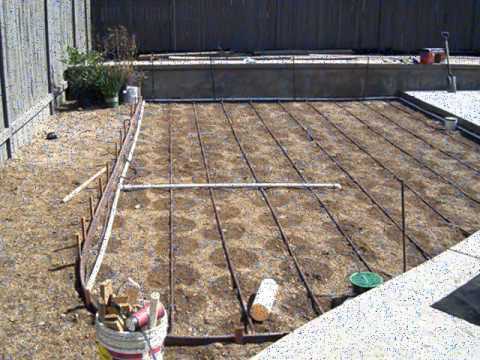Are you looking for a convenient way to irrigate your lawn’s hard-to-reach areas? Simply trying to keep a large one well-watered? Installing an irrigation system can make watering your lawn a lot easier and more efficient, while a buried sprinkler network ensures that it remains hidden. But putting it in requires careful planning to make certain the entire area is properly and evenly covered.

Fortunately, most lawn irrigation companies plan the system out so the property owner doesn’t have to. Here’s how they do it.
Installing a Lawn Irrigation System
In this post, we outline the steps from start to finish.
- 1. Plan the Installation
Many cities and towns require property owners to have a building permit before starting installation. This is especially applicable to areas that experience frequent droughts and ones where municipal ordinances differ from one locality to the next.
There may also be a need to check for underground utilities or cables to ensure that you can proceed. Planning out the installation helps avoid unnecessary stress.
- 2. Understand the Water Pressure and Flow Rate
Determining the pressure and flow rate of the water on your property allows the irrigation company to understand how many sprinklers will be needed to adequately cover the entire lawn.
To test the pressure, a water pressure tester will be hooked up. This offers a reading in pounds per square inch (PSI). Make sure all your faucets are turned off, otherwise the reading can be affected.
To understand the flow rate, a five-gallon bucket and timer are all you need. Flow capacity is measured in gallons per minute (GPM). All that needs to be done is to fill up the bucket and divide 5 by the number of seconds it takes for it to fill completely. Multiply that number by 60 and you have the GPM of the flow capacity.
- 3. Map Out the System
For this, the size of your lawn needs to be calculated along with the irrigation needs. With the help of the water pressure and flow rate, the irrigation company determines how many sprinklers are needed. They make a diagram of the lawn with the locations to map the types and positions of sprinkler heads before getting started.
- 4. Find Access to a Water Source
First, decide whether you want to have your lawn watered from the main source or if you’d rather create a spigot of your own. No matter what you choose, the installation company will need an anti-siphon valve to prevent fertilizers, salt and other minerals and chemicals from getting into your water supply.
- 5. Dig Trenches
A trenching machine or vibratory plow will be used to dig trenches along your yard. A slightly angled slope will be maintained to make it easier to reach in to handle the sprinkler heads and risers. They may also separate the sod from the soil to ensure it returns to its place quickly and flawlessly.
- 6. Install a Valve Manifold
Workers will dig a hole to place the valve manifold box. One end of this valve will be attached to the main water supply before the clamps on it are tightened to secure it.
- 7. Lay the PVC Pipeline
This is a fairly simple phase where the PVC pipeline will be laid down piece by piece along the trenches. At each of the markings laid down for the sprinklers, risers will be attached with 90-degree connectors. The sections are generally glued together.
- 8. Put the Sprinkler Heads in Place
Once the pipeline is installed and secured, sprinkler heads chosen according to your lawn’s irrigation needs are fitted. Before attaching them, the system might be flushed with water to get rid of debris and ensure there aren’t any blockages. The heads are then installed onto the risers before the workers fill the trenches with dirt and then sod.
- 9. Fix the Controller
Finally, the sprinkler system is connected to an automatic timer that lets you control how many times the lawn is watered and the duration of each spray. The wires are connected according to the specifications of the manufacturer. The instructions needed to connect it to the sprinkler system generally come with the controller.
So, there you have it. This is how lawn irrigation systems are installed, helping conserve water and time. Although it might seem like a complicated procedure, irrigation professionals can get the job done correctly and quickly. If you’re looking to have an irrigation system installed on your property, get in touch with our experts.

